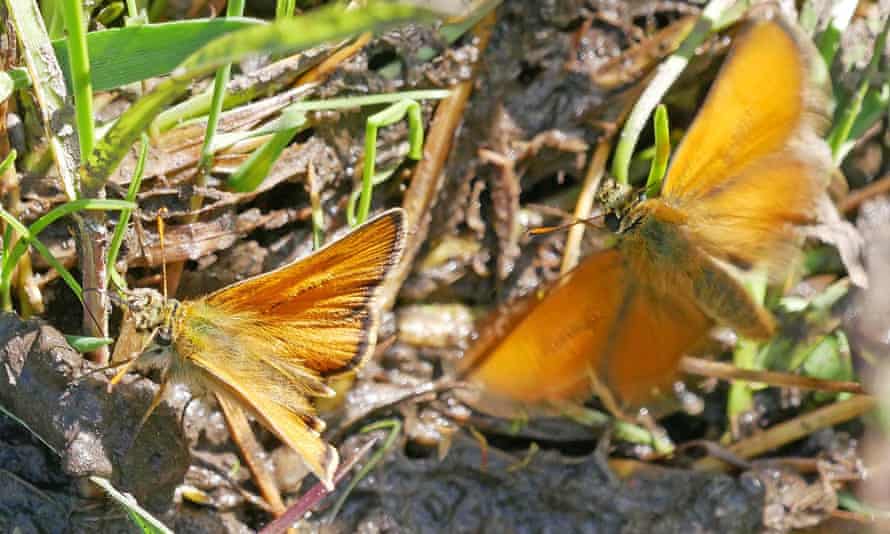Country diary: this forgotten grassland is a butterfly Serengeti
Low Willington, County Durham: Small skippers, ringlets and small heaths are thriving here – the bright wings of summer

If I give my imagination free rein on this sultry afternoon, I could almost believe this shoulder-high grassland – a shimmering sea of false oat, cock’s-foot and meadow foxtail – is African savanna. No elephants or wildebeest though; voles are the most numerous mammalian herbivores here, tunnelling through a thatch of decades of dead grass.
This revegetated site – one of the largest local collieries until 1967 – has reverted to an uncommon example of unmanaged grassland, never mown or grazed by domesticated animals. It’s a perfect habitat for butterflies, whose caterpillars feed on grasses, here in an abundance that I can recall from childhood but nowadays rarely encounter. Ringlets, the colour of plain chocolate, spiral upwards in courtship pursuit or territorial disputes. Large skippers whirl just ahead of my footsteps, settling to nectar on white clover. Small heaths and meadow browns dangle from arching panicles of Yorkshire fog.
A trickle of water rising from old mine workings runs through the site, its course traced by purple marsh thistles. Where it forms a muddy puddle across the path, small skippers, wings flashing like antique gold in the sunlight, have gathered around this water hole in this butterfly Serengeti.
They are “puddling” females, drinking mine water containing dissolved sodium salts, essential for egg laying. Forty years ago, they were uncommon in the north-east but they have moved rapidly northwards, perhaps responding to the climate crisis. As I cross the shallow pool they swirl around my squelching boots, a blur of frantic wings.
Eventually, butterfly numbers will dwindle here, as natural succession replaces open grassland with closed canopy woodland. The site is already studded with small oaks from acorns cached and forgotten by jays, hawthorns from seeds voided by berry-feeding redwings and fieldfares in autumn, and birch, alder and ash carried as winged seeds on the wind.
This urban edgeland is a legacy of a local industry that contributed to global heating. We need more trees to absorb atmospheric carbon dioxide. But on a glorious afternoon like this, deep shade would seem a poor substitute for walking through these swaying grasses, surrounded by the bright wings of summer.